Continuing on with a story from yesterday as we study better managing all water assets.
What's causing aquamarine ocean waters in New Jersey?
There’s definitely something in the ocean water that has South Jersey beachgoers all abuzz.
No, it’s not a great white shark.
It’s the crystal clear and
tropically tinted ocean water, much different than the grayish color
swimmers know along the Jersey Shore.
An upwelling of cool ocean water
earlier this month has led to a phytoplankton bloom off of the South
Jersey coast, which turned the waters from Long Beach Island to Cape May
to a Caribbean shade of aquamarine.
The water was made even more clear by an ongoing drought across parts of the Northeast.
Jeff George, 47, owner of
Atlantic City Cruises which operates out of Gardner’s Basin in Atlantic
City, says the water color is all the talk of passengers this July. And
it’s something he can’t stop talking about either.
“I’ve been on the water my whole
life, and I can’t remember water this clear and this green for this
amount of time,” George said, who believes it’s been at least ten days
and counting.
On his dolphin watching excursions, George said his staff is inundated with questions from curious customers.
“People are very impressed, and
it makes a huge difference in spotting dolphins,” said George, who was
excited that dolphins can now be more easily seen, from as much as
several feet below the ocean surface.
But what can’t be seen is the cause of the gossip-generating green water — phytoplankton.
Elizabeth Lacey, assistant
professor of marine science at Stockton University, said a phytoplankton
population off the South Jersey coast has explosively grown last week,
due to a process known as upwelling.
“Phytoplankton are microscopic
marine plants that blossom when the colder, nutrient-rich water comes to
the surface from down below,” Lacey explained.
Most are not visible to the naked
eye and no larger than the dot of a pencil, Lacey said. But when
upwelling fuels such a large bloom, the result is hard to miss.
“Phytoplankton contain
chlorophyll, and especially when exposed to sunlight, reflect the
turquoise-green wavelengths through the water,” Lacey said.
Billions of phytoplankton are the
cause. Lacey said a coke can filled with ocean water from the bloom can
contain as many as 500 thousand cells.
But the effect, other than the water color, is minimal.
“The bloom is harmless to people
and actually an important part of the food cycle, forming the base of
the ocean food web,” Lacey explained.
Microscopic organisms explain the ocean color.
But it’s a macroscale meteorological event that may be adding to the water clarity this summer.
“River flows through the
Northeast and Mid-Atlantic have been below to much below normal early
this summer,” according to Bill Marosi, a hydrologist with the National
Weather Service in State College, Pennsylvania. While South Jersey has
been wet, especially over the past week, about two-thirds of the
Northeast is either abnormally dry or in a moderate drought.
“Rivers deposit fresh water
sediment into the bays and oceans, and make the water murkier and less
transparent,” said Bob Chant, a professor of marine sciences at Rutgers
University.
Due to the expanding drought
across the Northeast, there has been less fresh water discharged into
the near shore waters than usual. That could lead to an uptick in water
clarity, according to Chant.
Stewart Farrell, director of the Coastal Research Center at Stockton University, agrees.
“Tropical water doesn’t have the
river or bay runoff to make it brown or cloudy,” Farrell explained,
adding that water clarity is simply a function of suspended or dissolved
sediment in the water.
The waters off South Jersey may look tropical, but that doesn’t necessarily mean the ocean will feel tropical.
“The upwelling brought ocean
temperatures near the coast down into the low 60s much of last week,”
according to meteorologist Jim Eberwine. He also noted warmer than
average water in the bays as well as farther offshore.
The near-shore water has since warmed, with water temperatures now a more pleasant 70 to 75 degrees.
So how long will the green water last? It’s all about the wind.
“Any kind of wind event can change the color, and wind can also move the bloom” said Chant.
Until then, a very small organism will continue to make a very big green splash along the summer.

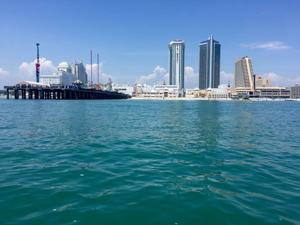
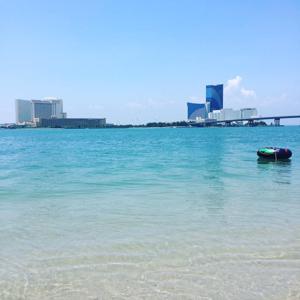
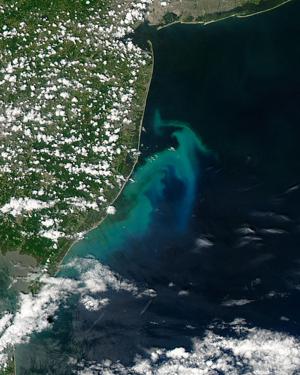
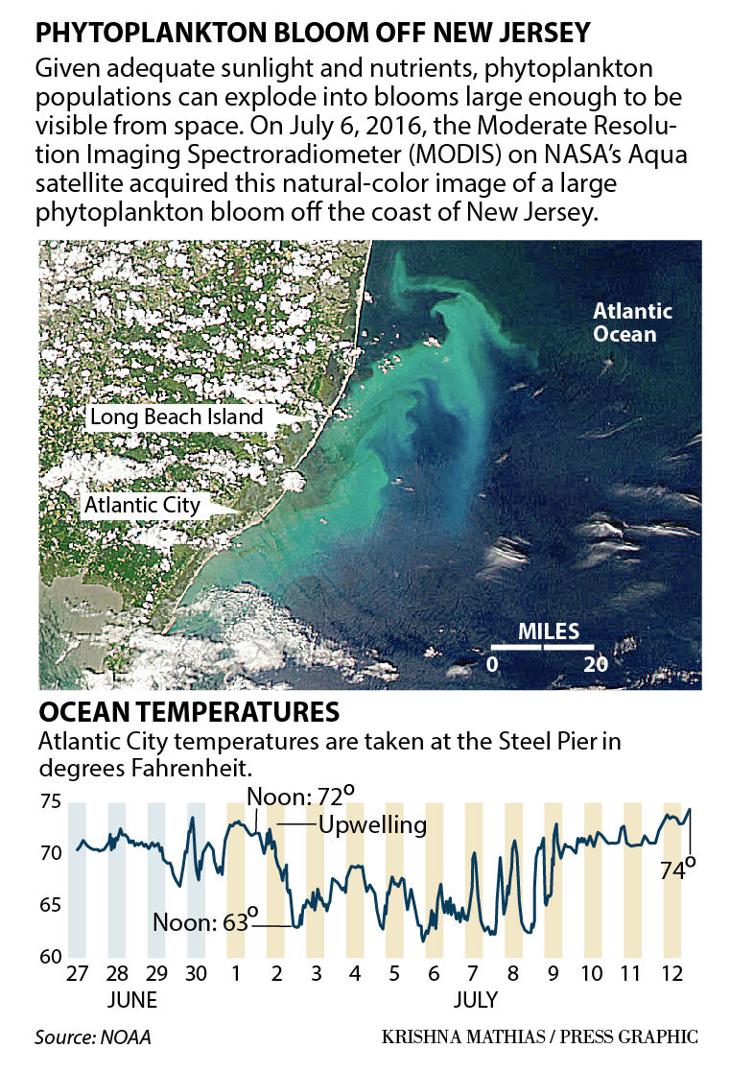

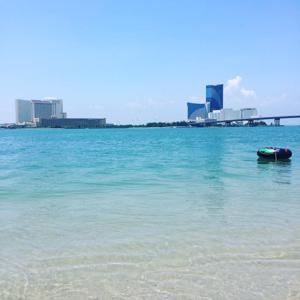
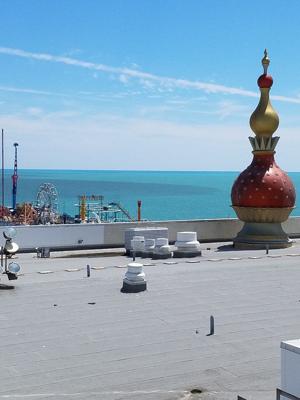
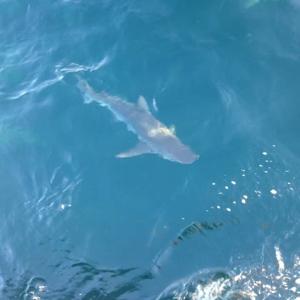
No comments:
Post a Comment